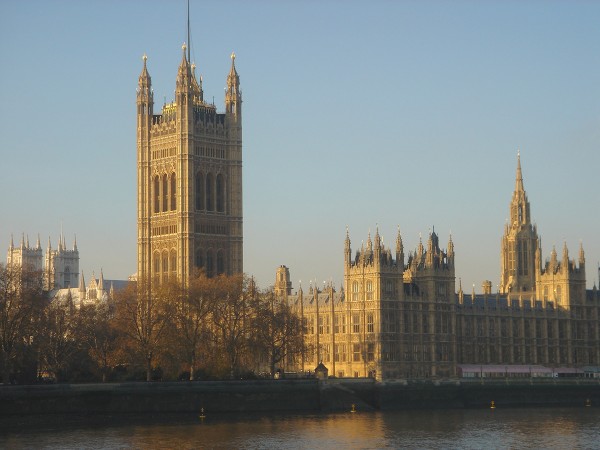 In his 2016 Autumn Statement, the new Chancellor of the Exchequer, Philip Hammond, announced that he was abandoning his predecessor’s target of achieving a budget surplus in 2019/20 and beyond. This was partly in recognition that tax revenues were likely to be down as economic growth forecasts were downgraded by the Office for Budget Responsibility. But it was partly to give himself more room to boost the economy in response to lower economic growth. In other words, he was moving from a strictly rules-based fiscal policy to one that is more interventionist.
In his 2016 Autumn Statement, the new Chancellor of the Exchequer, Philip Hammond, announced that he was abandoning his predecessor’s target of achieving a budget surplus in 2019/20 and beyond. This was partly in recognition that tax revenues were likely to be down as economic growth forecasts were downgraded by the Office for Budget Responsibility. But it was partly to give himself more room to boost the economy in response to lower economic growth. In other words, he was moving from a strictly rules-based fiscal policy to one that is more interventionist.
Although he still has the broad target of reducing government borrowing over the longer term, this new flexibility allowed him to announce increased government spending on infrastructure.
The new approach is outlined in the updated version of the Charter for Budget
Responsibility, published alongside the Autumn Statement. The government’s fiscal mandate would now include the following:
|
|
| • |
a target to reduce cyclically-adjusted public-sector net borrowing to below 2% of GDP by 2020/21; |
| • |
a target for public-sector net debt as a percentage of GDP to be falling in 2020/21. |
It also states that:
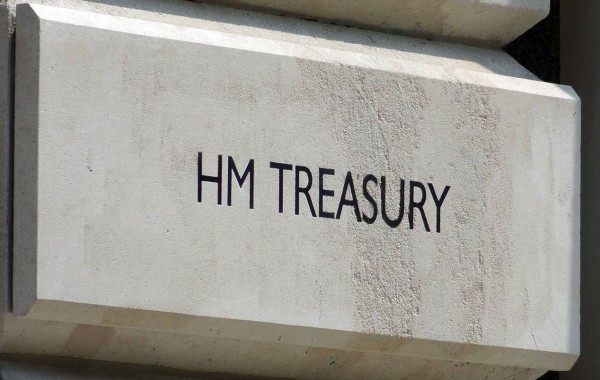 In the event of a significant negative shock to the UK economy, the Treasury will review the appropriateness of the fiscal mandate and supplementary targets as a means of returning the public finances to balance as early as possible in the next Parliament.
In the event of a significant negative shock to the UK economy, the Treasury will review the appropriateness of the fiscal mandate and supplementary targets as a means of returning the public finances to balance as early as possible in the next Parliament.
In the Autumn Statement, the new approach to fiscal policy is summarised as follows:
This new fiscal framework ensures the public finances continue on the path to sustainability, while providing the flexibility needed to support the economy in the near term.
With his new found freedom, the Chancellor was able to announce spending increases, despite deteriorating public finances, of £36bn by 2021/22 (see Table 1 in the Autumn Statement).
Most of the additional expenditure will be on infrastructure. To facilitate this, the government will set up a new National Productivity Investment Fund (NPIF)  to channel government spending to various infrastructure projects in the fields of housing, transport, telecoms and research and development. The NPIF will provide £23bn to such projects between 2017/18 and 2021/22.
to channel government spending to various infrastructure projects in the fields of housing, transport, telecoms and research and development. The NPIF will provide £23bn to such projects between 2017/18 and 2021/22.
But much of the additional flexibility in the new Fiscal Mandate will be to allow automatic fiscal stabilisers to operate. The OBR forecasts an increase in borrowing of £122bn over the 2017/18 to 2021/22 period compared with its forecasts made in March this year. Apart from the additional £23bn spending on infrastructure, most of the rest will be as a result of lower tax receipts from lower economic growth. This, in turn, is forecast to be the result of lower investment caused by Brexit uncertainties and lower real consumer spending because of the fall in the pound and the consequent rise in prices.
But rather than having to tighten fiscal policy to meet the previous borrowing target, the new Fiscal Mandate will permit this rise in borrowing. The lower tax payments will help to reduce the dampening effect on the economy.
So are we entering a new era of fiscal policy? Is the government now using discretionary fiscal policy to boost aggregate demand, while also attempting to increase productivity? Or is the relaxation of the Fiscal Mandate just a redrawing of the rules to give a bit more flexibility over the level of stimulus the government can give the economy?
Videos
 Autumn Statement 2016: Philip Hammond’s speech (in full) GOV.UK (23/11/16)
Autumn Statement 2016: Philip Hammond’s speech (in full) GOV.UK (23/11/16)
 Philip Hammond’s autumn statement – video highlights The Guardian (23/11/16)
Philip Hammond’s autumn statement – video highlights The Guardian (23/11/16)
 Key points from the chancellor’s first Autumn Statement BBC News, Andrew Neil (23/11/16)
Key points from the chancellor’s first Autumn Statement BBC News, Andrew Neil (23/11/16)
 Autumn Statement: higher borrowing, lower growth Channel 4 News, Helia Ebrahimi (23/11/16)
Autumn Statement: higher borrowing, lower growth Channel 4 News, Helia Ebrahimi (23/11/16)
 Autumn Statement: Chancellor’s growth and borrowing figures BBC News (23/11/16)
Autumn Statement: Chancellor’s growth and borrowing figures BBC News (23/11/16)
 Markets react to Autumn Statement Financial Times on YouTube, Roger Blitz (23/11/16)
Markets react to Autumn Statement Financial Times on YouTube, Roger Blitz (23/11/16)
 Hammond’s Autumn Statement unpicked Financial Times on YouTube, Gemma Tetlow (23/11/16)
Hammond’s Autumn Statement unpicked Financial Times on YouTube, Gemma Tetlow (23/11/16)
 Autumn Statement 2016: The charts that show the cost of Brexit Sjy News, Ed Conway (24/11/16)
Autumn Statement 2016: The charts that show the cost of Brexit Sjy News, Ed Conway (24/11/16)
 BBC economics editor Kamal Ahmed on the Autumn Statement. BBC News (23/11/16)
BBC economics editor Kamal Ahmed on the Autumn Statement. BBC News (23/11/16)
 Autumn statement: debate Channel 4 News, Financial Secretary to the Treasury, Jane Ellison, and Labour’s Shadow Business Secretary, Clive Lewis (23/11/16)
Autumn statement: debate Channel 4 News, Financial Secretary to the Treasury, Jane Ellison, and Labour’s Shadow Business Secretary, Clive Lewis (23/11/16)
 Autumn Statement: Workers’ pay growth prospects dreadful, says IFS BBC News, Kevin Peachey and Paul Johnson (24/11/16)
Autumn Statement: Workers’ pay growth prospects dreadful, says IFS BBC News, Kevin Peachey and Paul Johnson (24/11/16)
Articles
Autumn Statement 2016: Expert comment on fiscal policy Grant Thornton, Adam Jackson (23/11/16)
Philip Hammond loosens George Osborne’s fiscal rules to give himself more elbow room as Brexit unfolds CityA.M., Jasper Jolly (23/11/16)
Britain’s New Fiscal Mandate Opens Way To Invest For Economic Growth Forbes, Linda Yueh (23/11/16)
Autumn Statement 2016: experts respond The Conversation (23/11/16)
Chancellor’s ‘Reset’ Leaves UK Economy Exposed And Vulnerable Huffington Post, Alfie Stirling (23/11/16)
Britain’s Autumn Statement hints at how painful Brexit is going to be The Economist (26/11/16)
Chancellor’s looser finance targets highlight weaker UK economy The Guardian, Phillip Inman (24/11/16)
Hammond’s less-than-meets-the-eye plan that hints at the future Financial Times, Martin Sandbu (23/11/16)
Economists’ views on Philip Hammond’s debut Financial Times, Paul Johnson, Bronwyn Curtis and Gerard Lyons (24/11/16)
Government Publications
Autumn Statement 2016 HM Treasury (23/11/16)
Charter for Budget Responsibility: autumn 2016 update HM Treasury
Reports, forecasts and analysis
Economic and fiscal outlook – November 2016 Office for Budget Responsibility (23/11/16)
Autumn Statement 2016 analysis Institute for Fiscal Studies (November 2016)
Questions
- Distinguish between discretionary fiscal policy and rules-based fiscal policy.
- Why have forecasts of the public finances worsened since last March?
- What is meant by automatic fiscal stabilisers? How do they work when the economic growth slows?
- What determines the size of the multiplier from public-sector infrastructure projects?
- What dangers are there in relaxing the borrowing rules in the Fiscal Mandate?
- Examine the arguments for relaxing the borrowing rules more than they have been?
- If the economy slows more than has been forecast and public-sector borrowing rises faster, does the Chancellor have any more discretion in giving a further fiscal boost to the economy?
- Does the adjustment of borrowing targets as the economic situation changes make such a policy a discretionary one rather than a rules-based one?
 What have been, and will be, the monetary and fiscal responses to the Brexit vote in the referendum of 23 June 2016? This question has been addressed in speeches by Mark Carney, Governor of the Bank of England, and by George Osborne, Chancellor the Exchequer. Both recognise that the vote will cause a negative shock to the economy, which will require some stimulus to aggregate demand to avoid a recession, or at least minimise its depth.
What have been, and will be, the monetary and fiscal responses to the Brexit vote in the referendum of 23 June 2016? This question has been addressed in speeches by Mark Carney, Governor of the Bank of England, and by George Osborne, Chancellor the Exchequer. Both recognise that the vote will cause a negative shock to the economy, which will require some stimulus to aggregate demand to avoid a recession, or at least minimise its depth.
Mark Carney stated that:
The Bank of England stands ready to provide more than £250bn of additional funds through its normal facilities. The Bank of England is also able to provide substantial liquidity in foreign currency, if required.
In the coming weeks, the Bank will assess economic conditions and will consider any additional policy responses.
This could mean that at its the next meeting, scheduled for 13/14 July, the Monetary Policy Committee will consider reducing Bank Rate from its current level of 0.5% and introducing further quantitative easing.
In a speech on 30 June, he went further:
I can assure you that in the coming months the Bank can be expected to take whatever action is needed to support growth subject to inflation being projected to return to the target over an appropriate horizon, and inflation expectations remaining well anchored.
Then in a speech on 5 July, introducing the latest Financial Stability Report, he said that the Bank of England’s Financial Policy Committee is lowering the required capital ratio of banks, thereby freeing up capital for lending to customers. The part being lowered is the ‘countercyclical capital buffer’ – the element that can be varied according to the state of the economy. Mark Carney said:
The FPC is today reducing the countercyclical capital buffer on banks’ UK exposures from 0.5% to 0% with immediate effect. This is a major change. It means that three quarters of UK banks, accounting for 90% of the stock of UK lending, will immediately have greater flexibility to supply credit to UK households and firms.
Specifically, the FPC’s action immediately reduces regulatory capital buffers by £5.7 billion and therefore raises banks’ capacity to lend to UK businesses and households by up to £150 billion. For comparison, last year with a fully functioning banking system and one of the fastest growing economies in the G7, total net lending in the UK was £60 billion.
Thus although there may be changes to interest rates and narrow money in response to economic reactions to the Brexit vote, the monetary policy framework remains unchanged. This is to achieve a target rate of CPI inflation of 2% at the 24-month time horizon.
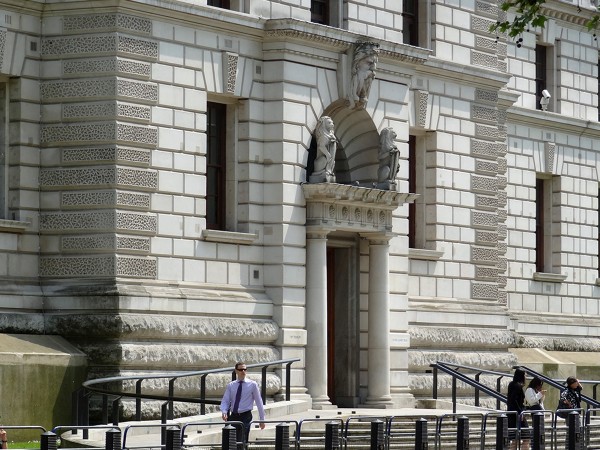 But what of fiscal policy?
But what of fiscal policy?
In its Charter for Budget Responsibility, updated in the Summer 2015 Budget, the government states its Fiscal Mandate:
3.2 In normal times, once a headline surplus has been achieved, the Treasury’s mandate for fiscal policy is:
• a target for a surplus on public-sector net borrowing in each subsequent year.
3.3 For the period outside normal times from 2015-16, the Treasury’s mandate for fiscal policy is:
• a target for a surplus on public-sector net borrowing by the end of 2019-20.
3.4 For this period until 2019-20, the Treasury’s mandate for fiscal policy is supplemented by:
• a target for public-sector net debt as a percentage of GDP to be falling in each year.
The target of a PSNB surplus by 2019-20 has been the cornerstone of recent fiscal policy. In order to stick to it, the Chancellor warned before the referendum that a slowdown in the economy as a result of a Brexit vote would force him to introduce an emergency Budget, which would involve cuts in government expenditure and increases in taxes.
 However, since the vote he is now saying that the slowdown would force him to extend the time for reaching a surplus beyond 2019-20 to avoid dampening the economy further. But does this mean he is abandoning his fiscal target and resorting to discretionary expansionary fiscal policy?
However, since the vote he is now saying that the slowdown would force him to extend the time for reaching a surplus beyond 2019-20 to avoid dampening the economy further. But does this mean he is abandoning his fiscal target and resorting to discretionary expansionary fiscal policy?
George Osborne’s answer to this question is no. He argues that extending the deadline for a surplus is consistent with paragraph 3.5 of the Charter, which reads:
3.5 These targets apply unless and until the Office for Budget Responsibility (OBR) assess, as part of their economic and fiscal forecast, that there is a significant negative shock to the UK. A significant negative shock is defined as real GDP growth of less than 1% on a rolling 4 quarter-on-4 quarter basis. If the OBR assess that a significant negative shock:
|
|
| • |
occurred in the most recent 4 quarter period; |
| • |
is occurring at the time the assessment is being made; or |
| • |
will occur during the forecast period |
then:
|
|
| • |
if the normal times surplus rule in 3.2 is in force, the target for a surplus each year is suspended (regardless of future data revisions). The Treasury must set out a plan to return to surplus. This plan must include appropriate fiscal targets, which will be assessed by the OBR. The plan, including fiscal targets, must be presented by the Chancellor of the Exchequer to Parliament at or before the first financial report after the shock. The new fiscal targets must be approved by a vote in the House of Commons. |
| • |
if the shock occurs outside normal times, the Treasury will review the appropriateness of its fiscal targets for the period until the public finances return to surplus. Any changes to the targets must be approved by a vote in the House of Commons. |
| • |
once the budget is in surplus, the target set out in 3.2 above applies. |
In other words, if the OBR forecasts that the Brexit vote will result in GDP growing by less than 1%, the Chancellor can delay reaching the surplus and thus not have to introduce tougher austerity measures. This, in effect, is what he is now saying and maintaining that, because of paragraph 3.5, it does not break the Fiscal Mandate. The nature of the next Budget, probably in the autumn, will depend on OBR forecasts.
A few days later, George Osborne announced that he plans to cut corporation tax from the current 20% to less than 15% – below the rate of 17% previously scheduled for 2019-20. His aim is not just to stimulate the economy, but to attract inward investment, as the rate would below that of any major economy and close the rate of 12.5% in Ireland. His hope would also be to halt the outflow of investment as companies seek to relocate in the EU.
Videos and podcasts
 Statement from the Governor of the Bank of England following the EU referendum result Bank of England (24/6/16)
Statement from the Governor of the Bank of England following the EU referendum result Bank of England (24/6/16)
 Uncertainty, the economy and policy – speech by Mark Carney Bank of England (30/6/16)
Uncertainty, the economy and policy – speech by Mark Carney Bank of England (30/6/16)
 Introduction to Financial Stability Report, July 2016 Bank of England (5/7/16)
Introduction to Financial Stability Report, July 2016 Bank of England (5/7/16)
 Osborne: Life will not be ‘economically rosy’ outside EU BBC News (28/6/16)
Osborne: Life will not be ‘economically rosy’ outside EU BBC News (28/6/16)
 Osborne takes ‘realistic’ view over surplus target BBC News (1/7/16)
Osborne takes ‘realistic’ view over surplus target BBC News (1/7/16)
 Why has George Osborne abandoned a key economic target? BBC News (1/7/16)
Why has George Osborne abandoned a key economic target? BBC News (1/7/16)
Articles
Mark Carney says Bank of England ready to inject £250bn into economy to keep UK afloat after EU referendum Independent, Zlata Rodionova (24/6/16)
Carney Signals Rate Cuts as Brexit Chaos Engulfs Political Class Bloomberg, Scott Hamilton (30/6/16)
Bank of England hints at UK interest rate cuts over coming months to ease Brexit woes International Business Times, Gaurav Sharma (30/6/16)
Carney prepares for ‘economic post-traumatic stress’ Financial Times, Emily Cadman (30/6/16)
Bank of England warns Brexit risks beginning to crystallise BBC News (5/7/16)
Bank of England tells banks to cut buffer to boost lending Financial Times, Caroline Binham and Chris Giles (5/7/16)
George Osborne puts corporation tax cut at heart of Brexit recovery plan Financial Times (3/7/16)
George Osborne corporation tax cut is the wrong way to start EU negotiations, former WTO boss says Independent, Hazel Sheffield (5/7/16)
George Osborne abandons 2020 UK surplus target Financial Times, Emily Cadman and Gemma Tetlow (1/7/16)
George Osborne scraps 2020 budget surplus plan The Guardian, Jill Treanor and Katie Allen (1/7/16)
Osborne abandons 2020 budget surplus target BBC News (1/7/16)
Brexit and the easing of austerity BBC News, Kamal Ahmed (1/7/16)
Osborne Follows Carney in Signaling Stimulus After Brexit Bloomberg, Simon Kennedy (1/7/16)
Questions
- Explain the measures taken by the Bank of England directly after the Brexit vote.
- What will determine whether the Bank of England engages in further quantitative easing beyond the current £385bn of asset purchases?
- How does monetary policy easing (or the expectation of it) affect the exchange rate? Explain.
- How effective is monetary policy for expanding aggregate demand? Is it more or less effective than using monetary policy to reduce aggregate demand?
- Explain what is meant by (a) capital adequacy ratios (tier 1 and tier 2); (b) countercyclical buffers. (See, for example, Economics 9th edition, page 533–7 and Figure 16.2))
- To what extent does increasing the supply of credit result in that credit being taken up by businesses and consumers?
- Distinguish between rules-based and discretionary fiscal policy. How would you describe paragraph 3.5 in the Charter for Budget Responsibility?
- Would you describe George Osborne’s proposed fiscal measures as expansionary or merely as less contractionary?
- Why is the WTO unhappy with George Osborne’s proposals about corporation tax?
- What is the Nash equilibrium of countries seeking to undercut each other’s corporation tax rates?
 During the 1970s, commentators often referred to the ‘political business cycle’. As William Nordhaus stated in a 1989 paper. “The theory of the political business cycle, which analyzes the interaction of political and economic systems, arose from the obvious facts of life that voters care about the economy while politicians care about power.”
During the 1970s, commentators often referred to the ‘political business cycle’. As William Nordhaus stated in a 1989 paper. “The theory of the political business cycle, which analyzes the interaction of political and economic systems, arose from the obvious facts of life that voters care about the economy while politicians care about power.”
In the past, politicians would use fiscal, and sometimes monetary, policies to manipulate aggregate demand so that the economy was growing strongly at the time of the next election. This often meant doing unpopular things in the first couple of years of office to allow for popular things, such as tax cuts and increased government transfers, as the next election approached. This tended to align the business cycle with the election cycle. The economy would slow in the early years of a parliament and expand rapidly towards the end.
To some extent, this has been the approach since 2010 of first the Coalition and now the Conservative governments. Cuts to government expenditure were made ‘in order to clear up the mess left by the previous government’. At the time it was hoped that, by the next election, the economy would be growing strongly again.
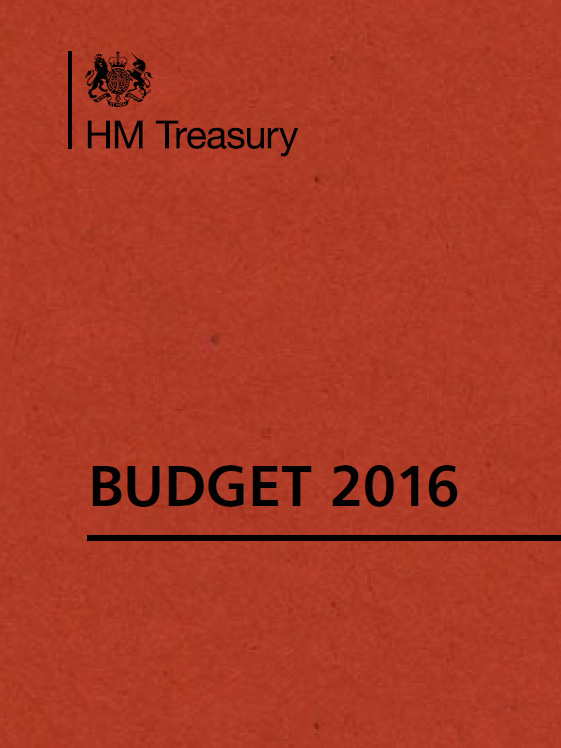 But in adopting a fiscal mandate, the current government could be doing the reverse of previous governments. George Osborne has set the target of a budget surplus by the final year of this parliament (2019–20) and has staked his reputation on achieving it.
But in adopting a fiscal mandate, the current government could be doing the reverse of previous governments. George Osborne has set the target of a budget surplus by the final year of this parliament (2019–20) and has staked his reputation on achieving it.
The problem, as we saw in the blog, Hitting – or missing – the government’s self-imposed fiscal targets is that growth in the economy has slowed and this makes it more difficult to achieve the target of a budget surplus by 2019–20. Given that achieving this target is seen to be more important for his reputation for ‘sound management’ of the public finances than that the economy should be rapidly growing, it is likely that the Chancellor will be dampening aggregate demand in the run-up to the next election. Indeed, in the latest Budget, he announced that specific measures would be taken in 2019–20 to meet the target, including a further £3.5 billion of savings from departmental spending in 2019–20. In the meantime, however, taxes would be cut (such as increasing personal allowances and cutting business rates) and government spending in certain areas would be increased. As the OBR states:
Despite a weaker outlook for the economy and tax revenues, the Chancellor has announced a net tax cut and new spending commitments. But he remains on course for a £10 billion surplus in 2019–20, by rescheduling capital investment, promising other cuts in public services spending and shifting a one-off boost to corporation tax receipts into that year.
But many commentators have doubted that this will be enough to bring a surplus. Indeed Paul Johnson, Director of the Institute for Fiscal Studies, stated on BBC Radio 4’s Today Programme said that “there’s only about a 50:50 shot that he’s going to get there. If things change again, if the OBR downgrades its forecasts again, I don’t think he will be able to get away with anything like this. I think he will be forced to put some proper tax increases in or possibly find yet further proper spending cuts”.
If that is the case, he will be further dampening the economy as the next election approaches. In other words, the government may be doing the reverse of what governments did in the past. Instead of boosting the economy to increase growth at election time, the government may feel forced to make further cuts in government expenditure and/or to raise taxes to meet the fiscal target of a budget surplus.
Articles
Budget 2016: George Osborne hits back at deficit critics BBC News (17/3/16)
George Osborne will have to break his own rules to win the next election Business Insider, Ben Moshinsky (17/3/16)
Osborne Accused of Accounting Tricks to Meet Budget Surplus Goal Bloomberg, Svenja O’Donnell and Robert Hutton (16/3/16)
George Osborne warns more cuts may be needed to hit surplus target Financial Times, Jim Pickard (17/3/16)
6 charts that explain why George Osborne is about to make austerity even worse Independent, Hazel Sheffield (16/3/16)
Budget 2016: Osborne ‘has only 50-50 chance’ of hitting surplus target The Guardian, Heather Stewart and Larry Elliott (17/3/16)
How will Chancellor George Osborne reach his surplus? BBC News, Howard Mustoe (16/3/16)
Osborne’s fiscal illusion exposed as a house of credit cards The Guardian, Larry Elliott (17/3/16)
The Budget’s bottom line: taxes will rise and rise again The Telegraph, Allister Heath (17/3/16)
Reports, analysis and documents
Economic and fiscal outlook – March 2016 Office for Budget Responsibility (16/3/16)
Budget 2016: documents HM Treasury (16/3/16)
Budget 2016 Institute for Fiscal Studies (17/3/16)
Questions
- Explain the fiscal mandate of the Conservative government.
- Does sticking to targets for public-sector deficits and debt necessarily involve dampening aggregate demand as an election approaches? Explain.
- For what reasons may the Chancellor not hit his target of a public-sector surplus by 2019–20?
- Compare the advantages and disadvantages of a rules-based fiscal policy and one based on discretion.
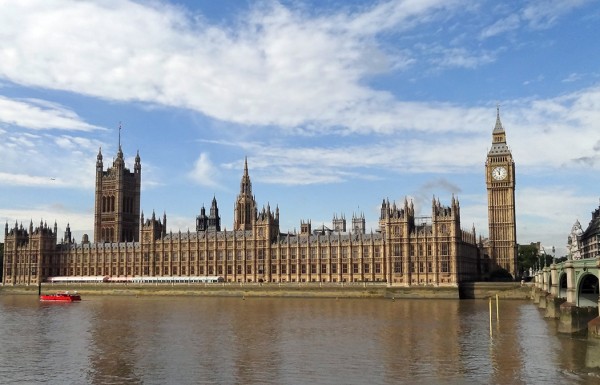 On election to office in May 2015, the UK’s Conservative government set new fiscal targets. These were set out in an updated Charter for Budget Responsibility. As Box 12.3 in Essentials of Economics (7th edition) states:
On election to office in May 2015, the UK’s Conservative government set new fiscal targets. These were set out in an updated Charter for Budget Responsibility. As Box 12.3 in Essentials of Economics (7th edition) states:
The new fiscal mandate set a target for achieving a surplus on public-sector net borrowing by the end of 2019/20. More controversially, government should then target a surplus in each subsequent year unless real GDP growth falls below 1 per cent … Meanwhile, the revised supplementary target for public-sector debt was for the net debt-to-GDP ratio to fall each year from 2015/16 to 2019/20.
What is more, the Charter requires the government to set a cap on welfare spending over a five-year period. 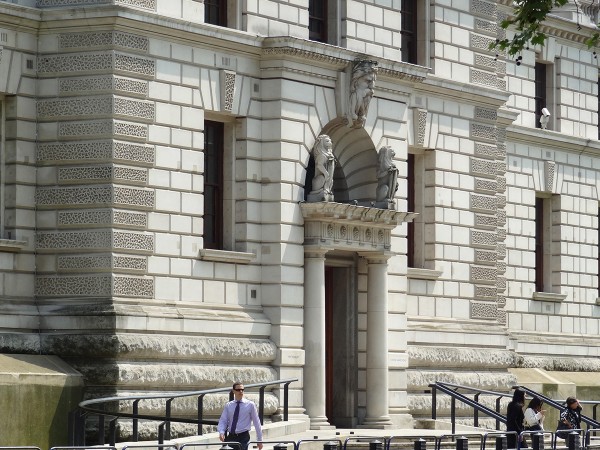 Such spending includes spending on pensions, tax credits, child benefit and unemployment benefit. In July 2015 the Chancellor set this cap at £115bn for 2016/17, a reduction of £12bn.
Such spending includes spending on pensions, tax credits, child benefit and unemployment benefit. In July 2015 the Chancellor set this cap at £115bn for 2016/17, a reduction of £12bn.
Whether or not such a tight fiscal target is desirable, the government has been missing the target. In November last year, the Chancellor had to backtrack on his plans to make substantial reductions in tax credits and as a result the welfare cap has been breached, as the following table from page 5 of the December 2015 House of Commons briefing paper shows.

Also, with the slowing of economic growth, the Chancellor has stated that he will miss the requirement for a fall in the net debt-to-GDP ratio unless further cuts in government spending are made, equivalent to 50p in every £100.
But, if the economy is slowing, is it right to cut government expenditure? In other words, should there be some discretion in fiscal policy to respond to economic circumstances? There are two issues here. The first is whether the resulting cut in aggregate demand will be detrimental to growth. The second is who will bear the cost of such cuts. Critics of the government claim that it will largely the poor who will lose if the cuts are made mainly from benefits.
The articles below examine the public finances, the difficulties George Osborne has been facing in sticking to his fiscal mandate and the options open to him.
Articles
Budget 2016: Osborne’s economic fitness regime BBC News, Andy Verity (14/3/16)
Budget 2016: George Osborne fuels speculation of nasty shocks The Guardian, Larry Elliott and Anushka Asthana (14/3/16)
Official publications
Charter for Budget Responsibility: Summer Budget 2015 update HM Treasury (July 2015)
OBR publications, including ‘Economic and fiscal outlook’ and ‘Fiscal sustainability report’ Office for Budget Responsibility
Questions
- Outline the main points of the Charter for Budget Responsibility (CBR).
- What are the arguments for sticking to fiscal rules, such as those in the CBR?
- What are the arguments for using discretion to adjust fiscal policy as economic circumstances change?
- Compare the Conservative government’s fiscal mandate with the newly announced approach to fiscal policy of the Labour opposition?
- How does the Labour Party’s new approach differ from the Golden Rule followed by Gordon Brown as Chancellor in the Labour government from 1997 to 2007?
- What factors will determine whether or not the government will return to meeting the rules set out in the Charter for Budget Responsibility?
 In his 2016 Autumn Statement, the new Chancellor of the Exchequer, Philip Hammond, announced that he was abandoning his predecessor’s target of achieving a budget surplus in 2019/20 and beyond. This was partly in recognition that tax revenues were likely to be down as economic growth forecasts were downgraded by the Office for Budget Responsibility. But it was partly to give himself more room to boost the economy in response to lower economic growth. In other words, he was moving from a strictly rules-based fiscal policy to one that is more interventionist.
In his 2016 Autumn Statement, the new Chancellor of the Exchequer, Philip Hammond, announced that he was abandoning his predecessor’s target of achieving a budget surplus in 2019/20 and beyond. This was partly in recognition that tax revenues were likely to be down as economic growth forecasts were downgraded by the Office for Budget Responsibility. But it was partly to give himself more room to boost the economy in response to lower economic growth. In other words, he was moving from a strictly rules-based fiscal policy to one that is more interventionist.In the event of a significant negative shock to the UK economy, the Treasury will review the appropriateness of the fiscal mandate and supplementary targets as a means of returning the public finances to balance as early as possible in the next Parliament.
 to channel government spending to various infrastructure projects in the fields of housing, transport, telecoms and research and development. The NPIF will provide £23bn to such projects between 2017/18 and 2021/22.
to channel government spending to various infrastructure projects in the fields of housing, transport, telecoms and research and development. The NPIF will provide £23bn to such projects between 2017/18 and 2021/22. Autumn Statement 2016: Philip Hammond’s speech (in full) GOV.UK (23/11/16)
Autumn Statement 2016: Philip Hammond’s speech (in full) GOV.UK (23/11/16) Philip Hammond’s autumn statement – video highlights The Guardian (23/11/16)
Philip Hammond’s autumn statement – video highlights The Guardian (23/11/16) Key points from the chancellor’s first Autumn Statement BBC News, Andrew Neil (23/11/16)
Key points from the chancellor’s first Autumn Statement BBC News, Andrew Neil (23/11/16) Autumn Statement: higher borrowing, lower growth Channel 4 News, Helia Ebrahimi (23/11/16)
Autumn Statement: higher borrowing, lower growth Channel 4 News, Helia Ebrahimi (23/11/16) Autumn Statement: Chancellor’s growth and borrowing figures BBC News (23/11/16)
Autumn Statement: Chancellor’s growth and borrowing figures BBC News (23/11/16) Markets react to Autumn Statement Financial Times on YouTube, Roger Blitz (23/11/16)
Markets react to Autumn Statement Financial Times on YouTube, Roger Blitz (23/11/16) Hammond’s Autumn Statement unpicked Financial Times on YouTube, Gemma Tetlow (23/11/16)
Hammond’s Autumn Statement unpicked Financial Times on YouTube, Gemma Tetlow (23/11/16) Autumn Statement 2016: The charts that show the cost of Brexit Sjy News, Ed Conway (24/11/16)
Autumn Statement 2016: The charts that show the cost of Brexit Sjy News, Ed Conway (24/11/16) BBC economics editor Kamal Ahmed on the Autumn Statement. BBC News (23/11/16)
BBC economics editor Kamal Ahmed on the Autumn Statement. BBC News (23/11/16) Autumn statement: debate Channel 4 News, Financial Secretary to the Treasury, Jane Ellison, and Labour’s Shadow Business Secretary, Clive Lewis (23/11/16)
Autumn statement: debate Channel 4 News, Financial Secretary to the Treasury, Jane Ellison, and Labour’s Shadow Business Secretary, Clive Lewis (23/11/16) Autumn Statement: Workers’ pay growth prospects dreadful, says IFS BBC News, Kevin Peachey and Paul Johnson (24/11/16)
Autumn Statement: Workers’ pay growth prospects dreadful, says IFS BBC News, Kevin Peachey and Paul Johnson (24/11/16)




